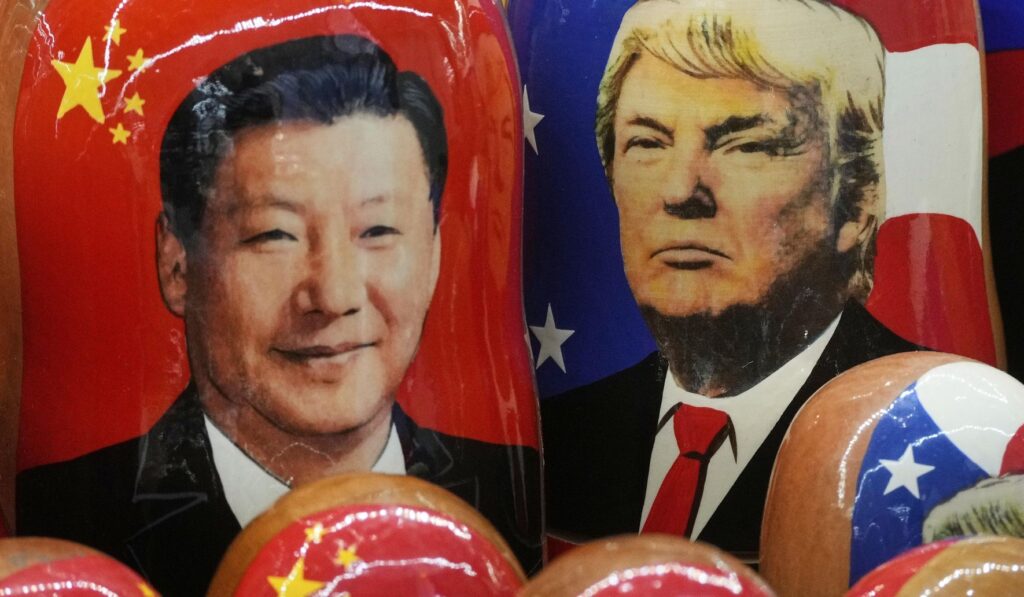The Trump presidential team has steadily shifted U.S. policy toward China from awkward cooperation to firm pushback, and this piece looks at how that change is playing out across trade, technology, national security, and alliances. It highlights where the previous Democratic approach favored engagement and where the current approach focuses on competition, containment, and rebuilding U.S. economic strength. The tone is clear: this is a strategic pivot meant to protect American workers, secure critical technologies, and reassert U.S. leadership on the world stage.
When it comes to America versus China, the Donald Trump presidential team is making great inroads and besting out the communists the Democrats of the previous administration oh-so-gladly worked with. That shift is visible in tougher trade stances, renewed focus on supply chains, and sharper controls on technology exports. The argument from this side is simple: engagement that hands advantages to a strategic rival is not a strategy worth repeating.
Trade policy has become a frontline in this rivalry. The Trump team has favored measures that push manufacturing and critical supply chains back to the U.S., using tariffs, incentives, and procurement rules to tilt decisions toward domestic industry. That approach aims to reduce dependence on Chinese factories for medicines, semiconductors, and defense components while creating jobs and strengthening national resilience.
Technology and intellectual property are another battleground where the rules are changing fast. Restricting exports of advanced chips and controlling investment into sensitive sectors are tools being used to prevent critical American innovations from bolstering Chinese military or surveillance capabilities. From a Republican perspective, safeguarding proprietary know-how and keeping leading-edge tech on American soil are nonnegotiable priorities.
National security now underpins more economic decisions than before, and that makes the policy firmer and more coherent. Military modernization, diplomatic pressure, and targeted sanctions work in tandem with economic levers to create consequences for behavior that threatens U.S. interests. The goal is deterrence: make clear that aggression, coercion, or theft will come at a real cost.
Alliances are being recast as a core component of the strategy, not an optional add-on. Rebuilding ties with traditional partners and reassuring regional allies in Asia gives the United States leverage and moral clarity in confronting Beijing. When democracies coordinate export controls, investment screens, and port security measures, they complicate any attempt by China to exploit gaps between friendly nations.
Energy policy ties directly into strategic competition as well. American energy independence underwrites diplomatic flexibility, reduces leverage that adversaries might exploit, and powers domestic industry without reliance on unstable sources. Encouraging domestic production and preserving a robust energy sector creates both economic growth and geopolitical strength.
At home, the political case centers on delivering tangible benefits to voters who felt left behind by outsourcing and lax enforcement. Revitalizing manufacturing, protecting patents, and strengthening law enforcement against corporate espionage are practical promises that resonate with working-class and middle-class Americans. The message is straightforward: national strength and prosperity are linked, and a tougher line on China is the way to secure both.
Critics warn about escalation and economic fallout, and those concerns keep policy debates sharp and public. Still, from this vantage, the costs of complacency with a strategic competitor are higher than the costs of firmness. Policymakers who favor engagement without conditions are seen as underestimating long-term risks to jobs, security, and global free markets.
Moving forward, success will be measured by whether supply chains are diversified, whether critical technologies remain under American control, and whether alliances deter coercive behavior. The Trump team’s playbook combines domestic policy levers with international coordination to produce leverage rather than dependency. For supporters, this marks a welcome reversal from past policies and a practical path to secure America’s future.



